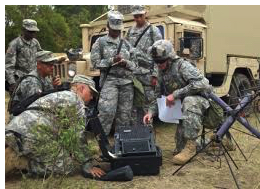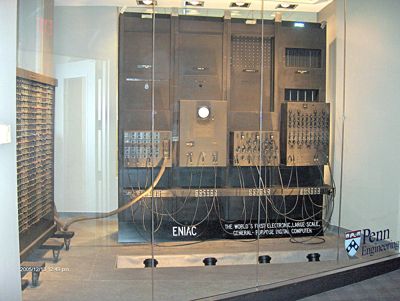Liqid Secures $32 Million Contract With Intel
To deliver world's largest composable HPC for Department of Defense, with 22.5PB of all-flash NVMe-oF parallel file system storage
This is a Press Release edited by StorageNewsletter.com on October 7, 2020 at 2:19 pmLiqid, Inc. announced a contract with the Department of Defense (DoD) to provide the world’s-largest composable HPC.
The $32 million contract, shared with Intel Corp., was awarded by the United States Corps of Engineers and will be deployed at the US Army Combat Capabilities Development Command‘s Army Research Laboratory‘s DoD Supercomputing Resource Center at Aberdeen Proving Ground, MD.

The two HPCs, named Jean and Kay, provide a total of 15 petaflops of performance. They are named in recognition of Jean Bartik and Kay McNulty, 2 of the women responsible for developing the first public sector HPC in the US, most of whom never received sufficient recognition for their contributions to computing in their lifetimes.
Day-to-day operations of the two systems will be overseen by the HPC Modernization Program (HPCMP), a technology-led, innovation-focused program committed to extending HPC and propelled by AI to address some of the world’s most significant challenges.
Composing Adaptive Public Sector Computing with the DoD
The integration of Liqid’s Composable Infrastructure platform with the Intel Xeon Platinum 9200 CPUs featuring Intel DL Boost technology and further acceleration from NVIDIA A100 Tensor Core GPUs will deliver agility and performance required to meet the demands of HPCMP’s AI-infused workloads, especially during data ingest and preparation.
The Intel Xeon Scalable processor series sets a new level of platform convergence and capabilities across compute, storage, memory, network, storage-class memory technology, and hardware-based security. The feature-rich, highly versatile platform will enable the HPCMP to accelerate critical R&D and other matters of national security.
With Liqid’s Composable Fabric, the HPCMP has the ability to compose the exact amount of NVIDIA A100 GPU performance into the platform to meet the data performance requirements during the training phase of the AI process. Users can dynamically orchestrate any CPU to GPU ratio, along with composing other accelerators across PCI-Express, IB, and Ethernet fabrics. Liqid’s orchestration software dynamically composes CPUs, GPUs, NVMe SSDs, networking, and storage-class memory to create software-defined bare metal servers on demand. This enables resource utilization to deliver previously impossible performance for AI-driven data analytics operations.
“As HPC and AI workloads continue to converge, a new class of hardware and software solutions are emerging to address the data-intensive applications. Intel Xeon Scalable Processors with built-in AI acceleration address the need for faster, more-adaptive computing platforms to support these powerful applications,” said Trish Damkroger, VP and GM of Intel’s HPC organization. “We are pleased to work with the team at Liqid to deliver groundbreaking HPC innovation with the world’s largest composable HPC, capable of meeting the evolving threats to national security, whether related to climate research, virology, national security, physics-based modeling, and other pressing needs that require cutting-edge performance.“
The two composable systems are comprised of the following:
Jean
- The Liqid CDI platform
- 1,202 Intel Xeon Platinum 9200 CPUs
- 280 NVIDIA A100 GPUs
- 323TB of memory
- 12.5PB of Liqid all-flash NVMe-oF parallel file system storage
- NVIDIA Mellanox HDR 200Gb/s IB Smart Networking
Kay
- The Liqid CDI platform
- 1,010 Intel Xeon Platinum 9200 CPUs
- 76 NVIDIA A100 GPUs
- 240TB of memory
- 10PB of Liqid all-flash NVMe-oF parallel file system storage
- NVIDIA Mellanox HDR 200Gb/s IB Smart Networking
Honoring Women’s Pivotal Role in Public Sector HPC
Kay McNulty, Jean Bartik, Betty Holberton, Ruth Teitebaum, Frances Spence, and Marlyn Metzer were the first programmers of the Electronic Numerical Integrator and Computer (ENIAC). The first digital public sector HPC in the US, the general-purpose ENIAC system was first deployed in 1946 to aid in the war effort and ran continuously from 1947 to 1955.

Sometimes referred to dismissively as refrigerator girls who simply modeled the hardware much like an ad for a kitchen appliance, these pioneers of digital computing were largely not given their due. By naming new, innovative systems after McNulty and Bartik, the HPCMP seeks to honor their role and positive impacts in the history of computing. These women made significant contributions that codified many of the fundamentals of HPC. Future deployments will bear the names of the other women who developed the groundbreaking technologies.
“Liqid is honored to collaborate with Intel and be chosen for this historic contract with the DoD, competing vs. a field of Silicon Valley’s most legendary technology providers, to deliver the world’s largest fully composable HPC – a system that will be utilized to conduct some of the world’s most critical data analytics,” said Sumit Puri, CEO and co-founder, Liqid. “We look forward to working with these teams to collaborate on AI-centric HPC systems to solve the country’s most pressing problems, and we are fully driven to live up to the precedents set by their namesakes, Kay McNulty and Jean Bartik.“
Download free white paper on benefits of composable infrastructure.
About the DoD HPC Modernization Program (HPCMP)
The HPCMP provides the Department of Defense supercomputing capabilities, high-speed network communications and computational science expertise that enable DoD scientists and engineers to conduct a wide-range of focused R&D, test and evaluation, and acquisition engineering activities. This partnership puts advanced technology in the hands of US forces more quickly, less expensively, and with greater certainty of success. Today, the HPCMP provides an advanced computing environment for the DoD that includes expertise in software development and system design, powerful HPC systems, and a premier wide-area research network. The HPCMP is managed on behalf of the Department of Defense by the US Army Engineer R&D Center located in Vicksburg, Mississippi.
About CCDC ARL
CCDC Army Research Laboratory is an element of the US Army Combat Capabilities Development Command. As the Army’s corporate research laboratory, ARL is operationalizing science to achieve transformational overmatch. Through collaboration across the command’s core technical competencies, CCDC leads in the discovery, development and delivery of the technology-based capabilities required to make Soldiers more successful at winning the nation’s wars and come home safely. CCDC is a major subordinate command of the Army Futures Command.













 Subscribe to our free daily newsletter
Subscribe to our free daily newsletter

